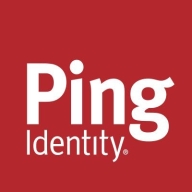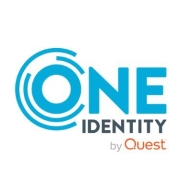


ForgeRock and OneLogin by One Identity are competing identity and access management solutions. OneLogin appears to have an advantage due to its seamless integration capabilities, although ForgeRock offers strong security credentials.
Features: ForgeRock provides enterprise-level security with customizable workflows and extensive access management. OneLogin emphasizes ease of integration with third-party applications, boasting a user-friendly interface and facilitating efficient deployment.
Room for Improvement: ForgeRock can be complex, requiring advanced technical support and a steep learning curve for effective deployment. OneLogin could benefit from enhancing customization options and offering more robust advanced security features to better compete with enterprise-grade security needs.
Ease of Deployment and Customer Service: OneLogin offers a straightforward deployment process with excellent support services, making integration efficient. Although ForgeRock offers powerful solutions, its deployment process can be intricate, necessitating thorough technical guidance.
Pricing and ROI: ForgeRock tends to have higher setup costs due to its comprehensive customization capabilities, potentially extending the ROI period. OneLogin presents a more cost-effective model, achieving faster ROI with its simplified deployment and integration processes, making it attractive for organizations valuing speed and agility.



Omada Identity is an identity governance and administration (IGA) solution designed to help organizations manage and secure digital identities and access across their IT environments. It focuses on enhancing security, compliance, and efficiency by automating identity management processes.
Omada Identity offers a robust set of features that streamline identity lifecycle management, access governance, and compliance reporting. It integrates with a wide range of IT systems, applications, and data sources, providing a centralized platform for managing user identities and access rights. The solution enables organizations to enforce security policies, ensure regulatory compliance, and reduce the risk of unauthorized access.
What are the critical features of Omada Identity?
What benefits or ROI items should users look for in the reviews when evaluating Omada Identity?
Omada Identity is widely adopted across various industries, including healthcare, finance, and manufacturing. In healthcare, it helps protect patient data and comply with regulations like HIPAA. In finance, it ensures compliance with SOX and other financial regulations. In manufacturing, it secures access to sensitive production data and intellectual property.
Pricing and licensing for Omada Identity are typically based on the number of users and the specific features required. Customer support is available through various channels, including online resources, support tickets, and professional services for implementation and customization.
In summary, Omada Identity is a comprehensive IGA solution that enhances security, compliance, and efficiency in managing digital identities and access.
ForgeRock is a comprehensive open-source identity and access management solution designed to meet the unique needs of your users and workforce. With ForgeRock you can orchestrate, manage, and secure the complete lifecycle of identities in any cloud or hybrid environment. ForgeRock allows you to set up bot detection, identity proofing, and risk-based authentication.
With ForgeRock, you can define access policies and automate the management of the identity lifecycle all from a central, easy to use, and graphical dashboard. ForgeRock Access Management allows you to build safe authentication using options like passwordless and usernameless logins, single sign-on, biometrics, contextual analytics, and behavioral authentication. When threats appear, you can swiftly change how your users access your most sensitive applications and provide users with secure access to the applications, systems, and resources they need on demand.
ForgeRock Benefits and Key Features
Reviews from Real Users
ForgeRock stands out among its competitors for a number of reasons. Two major ones are its robust identity and access tools and its being easy to manage and scale with one central dashboard.
PeerSpot users note the effectiveness of these features. A technology solutions leader at an outsourcing company writes, “We need it for multiple clients, multiple implementations. Not all of them are necessarily a multi-tenant solution. We need a very versatile solution that can do a lot of work, but from a single instance that we can centralize authentications and we don't duplicate the efforts and that's where ForgeRock seems to do better.”
Mohamed B., a cyber security consultant at a tech company, writes, "Their access management solution, OpenAM, is most valuable because it meets the needs of a lot of users. ForgeRock secured our system so that it is accessed only by authorized people, and it implemented the SSO."
OneLogin by One Identity is a cloud-based access management solution for the modern enterprise. It delivers secure access for every user, every app and every device to meet an organization’s Workforce and Customer and Identity and Access Management (CIAM) needs.
OneLogin provides secure single sign-on, multi-factor authentication (supporting a wide array of passwordless authentication factors), adaptive authentication, desktop-level MFA, directory integration with AD, LDAP, G Suite and other external directories, identity lifecycle management and much more. OneLogin advanced authentication capabilities provide multi-layer, context aware and risk-based protection, minimizing the most common attacks and resulting in increased security, a frictionless user experience, and compliance with regulatory requirements. Furthermore, OneLogin’s user-friendly interface and streamlined design make it easy for end users and IT administrators to navigate the platform and remain productive.
We monitor all Identity Management (IM) reviews to prevent fraudulent reviews and keep review quality high. We do not post reviews by company employees or direct competitors. We validate each review for authenticity via cross-reference with LinkedIn, and personal follow-up with the reviewer when necessary.